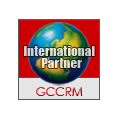
Unified Market?
CNN just announced that ASEAN signed a trade pact with the United States. "Southeast Asian trade ministers signed an expanded trade and investment agreement with the United States on Friday that calls for a mechanism that allows U.S. imports easier access to the region. The Trade and Investment Facilitation Arrangement, or TIFA, was signed by U.S. Trade Representative Susan Schwab and trade and commerce ministers from the 10-member Association of Southeast Asian Nations."
For a region with a half-billion customers, this seems like good news. And there are indeed a number of countries with rich economies in the region, including Singapore, Malaysia and Brunei.
This agreement should help simplify customs arrangements, a critical need in a multi-country region (the same problem persists in Central and South America). As such, it should help any number of countries do business in the region, since such uniformity -- or at least rationalization -- of customs arrangements will be supported inevitably by technolog. This technology, in all probability, will have an effect that will be scaled and improved over the next decade. (Just in time for other transformative changes in the region, including a bigger free trade zone called AEC, targeted for 2015.)
US exports to the region are rising fast. FDI was up 48 percent in 2006, the same levels seen before the 1997 Asian financial crisis (see "Foreign Investment in ASEA Rises 48 Percent to 38 Billion in USD," AFX-Asia, 8.21.2006), in which a web of corporate and bank debt caused a collapse -- even contagion -- that sent ripples throughout the global economy.
A big question is the effect that China will have on the region. China already is a powerhouse there, taking advantage of proximity to keep its relative cost of goods low. Nevertheless, ASEAN has not included South Korea, Japan and China formally, instead relying on annual meetings of the so-called "ASEAN Plus Three" to frame the issues of regional cooperation. What's the role that China will play?
Some thoughts include ASEAN remaining as it is, with other regional countries forming their own multi-lateral trade agreements. Candidate groupings have included China and India, or even China and Japan (despite recent problems between the two countries regarding purported Japanese nationalism, which is probably overstated).

Examine the chess game, then: The US approaching ASEAN from the Pacific, China, India and Japan joining in some way to trade locally with ASEAN ... the key consequence I can see is that US companies will be forced to increase their FDI into China and ASEAN countries to reach cost parity.
And even then, the challenge for US companies is actually understanding the markets. This is the big rub for US companies. The range of customers is diverse, culturally, geographically, linguistically, economically ... just in the case of Malaysia and Singapore, one can find vast differences in religion, education, culture, income and world view.
Which companies will have the customer data and instincts needed to market, innovate and operate well in the region? Sure, the customs paperwork may become simpler soon, but the customer paperwork is about to explode.
Photograph Copyright (c)2006 by Paul K. Ward.

